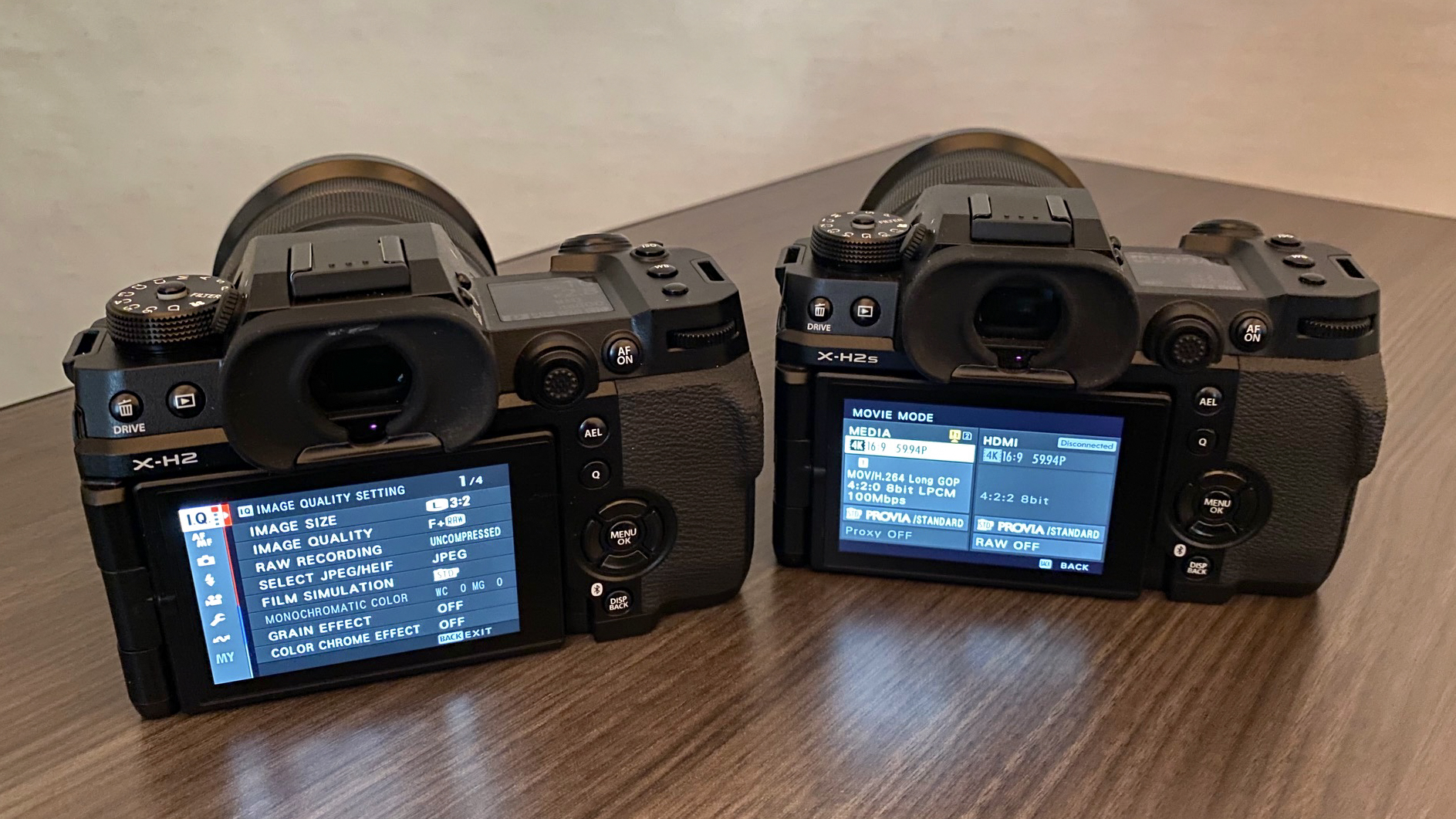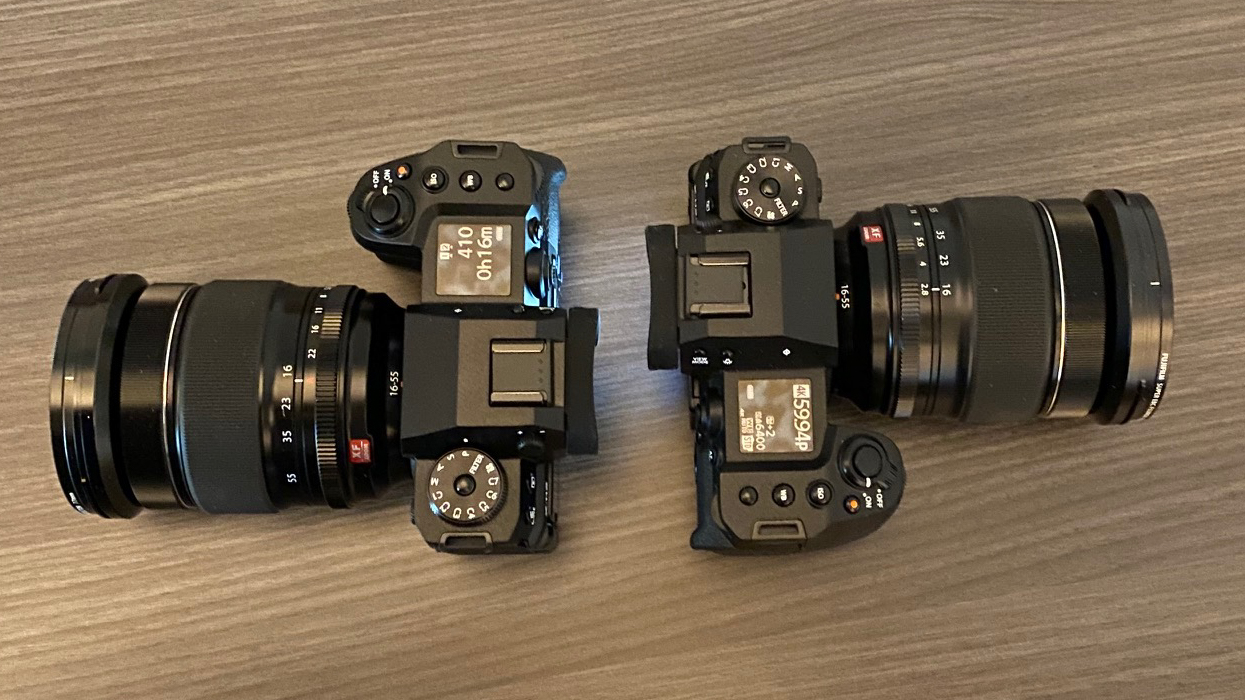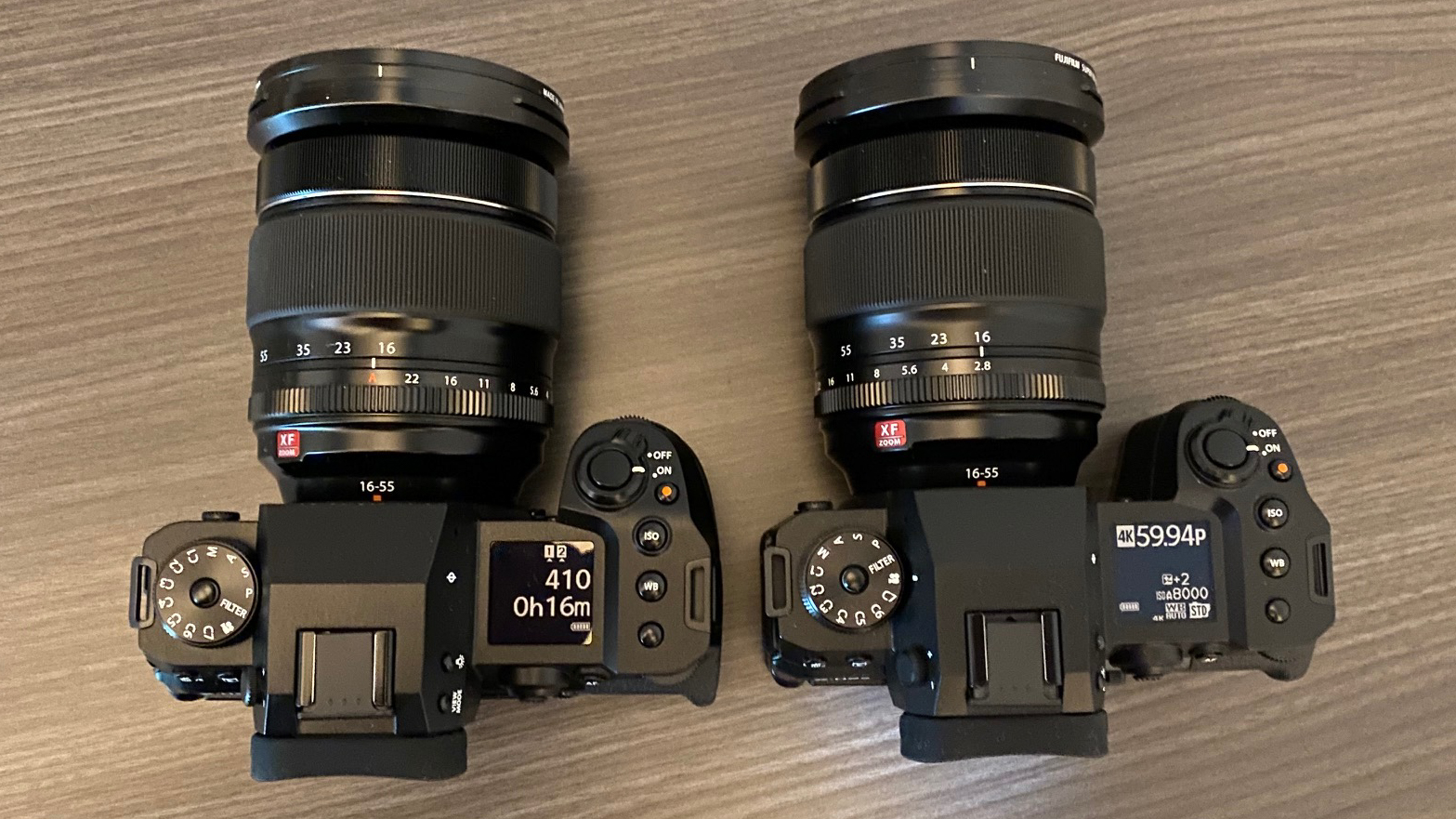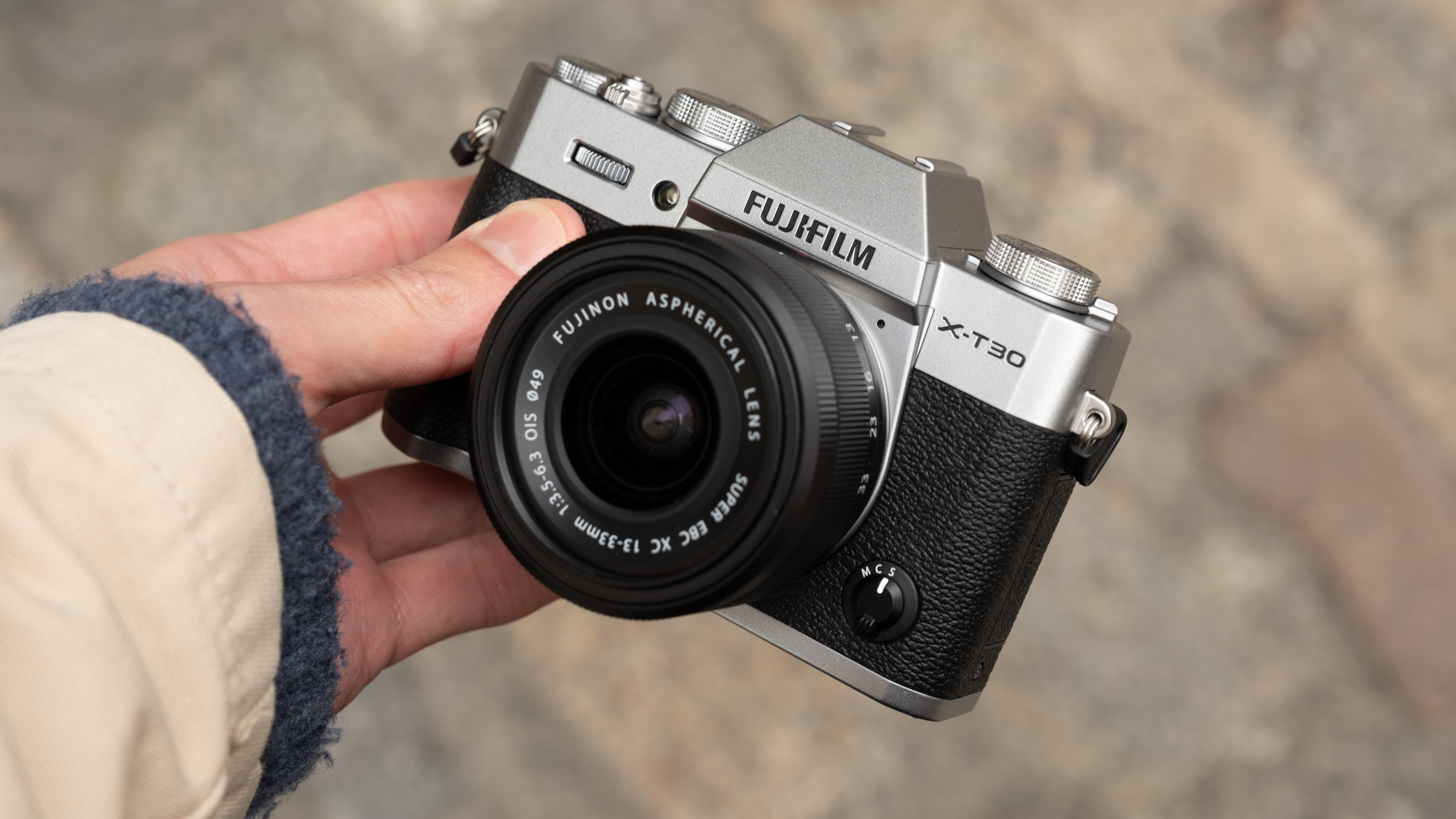Fujifilm X-H2 vs X-H2s – what's the difference?
The two Fujifilm flagship cameras look almost identical – so how do you spot which is which, and choose the one for you?
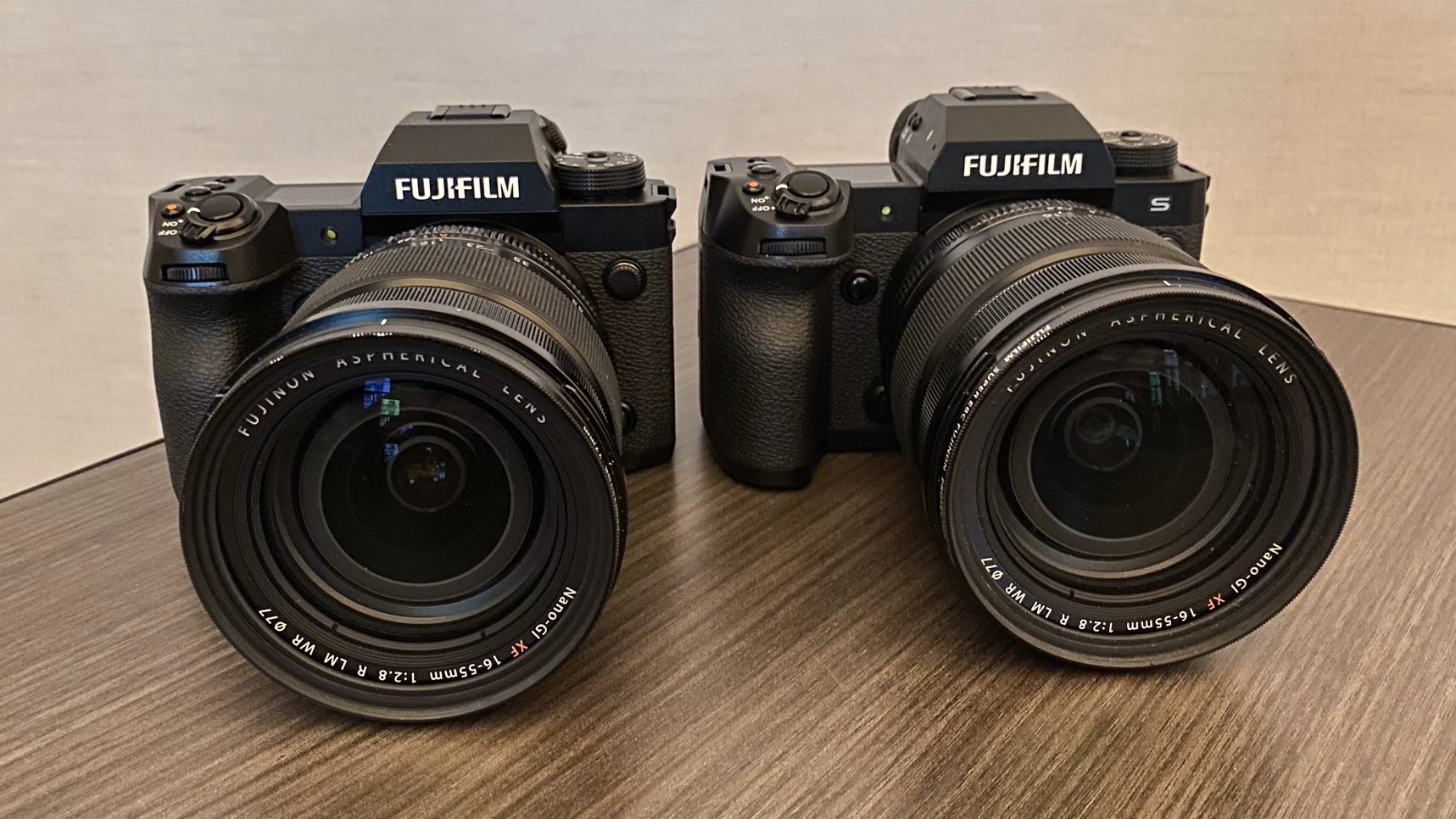
The Fujifilm X-H2S is one of the most impressive cameras we have seen this year - and now it has an almost identical-looking sibling in the shape of the Fujifilm X-H2. So in the Fujifilm X-H2 vs X-H2S face-off, what are the key differences - and do you pick which of the two is the best for your needs?
From the outside, these are more than identical twins - as the placement of every button, dial, screen, and slot is exactly the same. They weigh the same - and they measure the same. And if it wasn't for the big S on the front of Fujifilm X-H2S - which is missing from the Fujfilm X-H2 - you couldn't pick them apart in an identity parade. And even if they are turned out, only the full names written top left above the LCD screen are the sole distinguishing marks.
Fujifilm X-H2 vs X-H2s: what's different?
Why you can trust Digital Camera World
But beneath the surface, there is much more to the Fujifilm X-H2 vs X-H2S conundrum…
We have as yet not fully tested the X-H2, but here is a rundown of the other key difference between the two models that we have so far identified:
- The price - the X-H2 is $500 cheaper, at $1,999
- The X-H2 has a 40MP sensor, whilst the resolution of the X-H2S is 26.1MP
- The X-H2 doesn't have the X-H2S's high-speed stacked-layer CMOS sensor, so can't give the same readout speed performance
- X-H2 can shoot 8k at 30fps; the X-H2 is limited to 6.2k
- The X-H2 doesn't have the X-H2's Open Gate mode - which records video using all the sensor's pixels, which is useful for anamorphic shooting
- 13+ stops of dynamic range on the X-H2, so not the 14+ stops of the X-H2S (when using F-Log)
- 1/88sec sensor scan time which means a much more noticeable rolling shutter effect than the X-H2s (which has a scan time of 1/180sec)
- X-H2 has increased 3.33m PDAF points, compared to 2.13m on the X-H2S
- 20fps blackout-free shooting on the X-H2, whilst the X-H2S doubles this motordrive speed to 40fps
- Inferior focus-tracking performance on X-H2 (due to the different sensor types)
- X-H2 has a higher maximum electronic speed of 1/180,000s (on the X-2S it is 1/32,000sec). This could be used to allow you to shoot at ultra-wide apertures in very bright light (without an ND filter), or for high-speed photography (if lit with very bright light source)
- Base ISO 125 on X-H2, compared to ISO 160 on X-H2S
- Added 4:3/5:4 ratios for JPEG and HEIF
- X-H2 adds 8K 30p video
- 4K video only goes up to 60p on X-H2, not 120p
- The X-H2 offers a 160-megapixel multishot mode - combining a 20-shot sequence to create a super-high resolution image in post
- X-H2 adds an AI auto white balance mode (although this may come to the X-H2S as a firmware update)
Fujifilm X-H2 vs X-H2s: what's the same?
Of course, many of the key features of the X-H2 and X-H2S are identical, of course – here are some of the more important:
- Body design and button layout
- Weather sealing
- Electronic viewfinder (EVF), 5.76M dots, 120fps
- Vari-angle LCD screen
- 5-axis in-body image stabilization
- Dual card slots - CFexpress Type B + UHS-II SD
- 10-bit 4:2:2 video recording internally, or 12-bit RAW via HDMI and an Atomos or Blackmagic recorder
- Connections and ports (including mic and headphone jacks, and a full-size HDMI)
- Battery and accessories (including vertical battery grip, the upcoming file transfer grip, and a cooling fan for prolonged video recording)
- Image processing engine
See our Fujifilm X-H2S review and our X-H2 hands-on with sample images
Fujifilm X-H2 vs X-H2s: so how do you decide?
The easy way, perhaps, to pick the two cameras apart is to think of the X-H2S for speed, and the X-H2 is designed for resolution. But as the H in the name might imply - both of the 2022 X-H models are hybrid cameras - designed for those that need high-performance video as well as great stills shooting.
Fujifilm themselves talk about the X-H2S appealing to those that need the faster autofocus - so those shooting sport, aircraft, or wildlife say. And that the X-H2's higher resolution, means it is more attractive to commercial, product and landscape shooters.
But the significant saving in going for the X-H2 is probably going to be the key thing that will make people make the decision. Getting the resolution of a world-beating still for a camera of this type, and 8K video at this price, make this the go-to choice for most people.
Those who need the more esoteric additional features of the X-H2s, will know their benefits and will be prepared to pay the extra. But for most users, the more affordable X-H2 will be the one to go for.
• Preorder the X-H2 at BHPhoto in US, or at Wex in the UK, or at Ted's Cameras in Australia.
Check out the Best Fujifilm cameras, and the Best Fujifilm lenses
The best camera deals, reviews, product advice, and unmissable photography news, direct to your inbox!

Chris George has worked on Digital Camera World since its launch in 2017. He has been writing about photography, mobile phones, video making and technology for over 30 years – and has edited numerous magazines including PhotoPlus, N-Photo, Digital Camera, Video Camera, and Professional Photography.
His first serious camera was the iconic Olympus OM10, with which he won the title of Young Photographer of the Year - long before the advent of autofocus and memory cards. Today he uses a Sony A7 IV, alongside his old Nikon D800 and his iPhone 15 Pro Max.
He is the author of a number of books including The Book of Digital Photography, which has been translated into a dozen different languages.
In addition to his expertise in photography and videomaking, he has written about technology for countless publications and websites including The Sunday Times Magazine, The Daily Telegraph, What Cellphone, T3 and Techradar.
